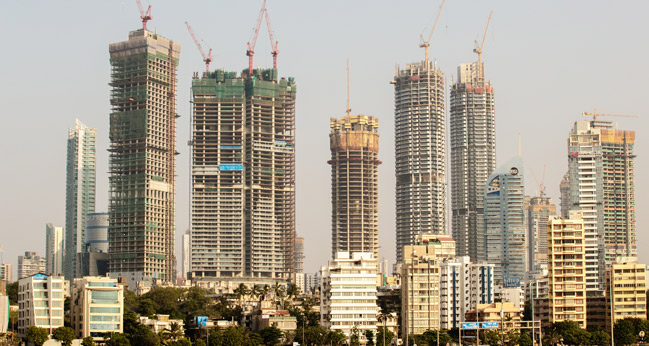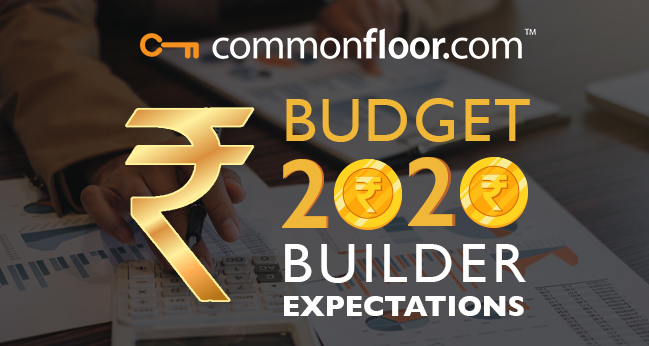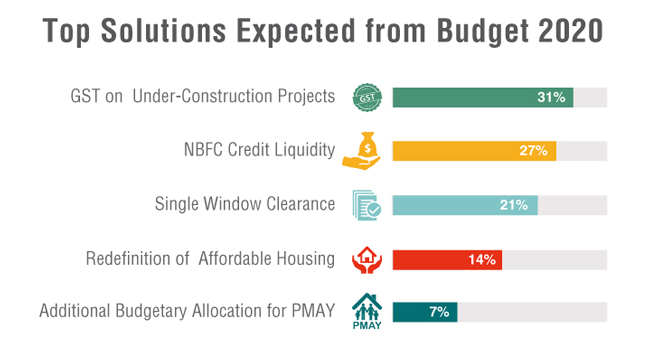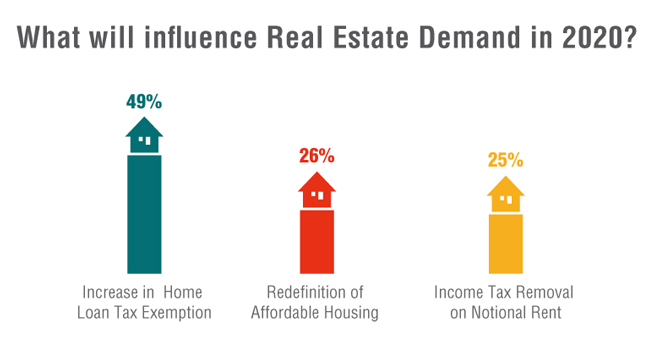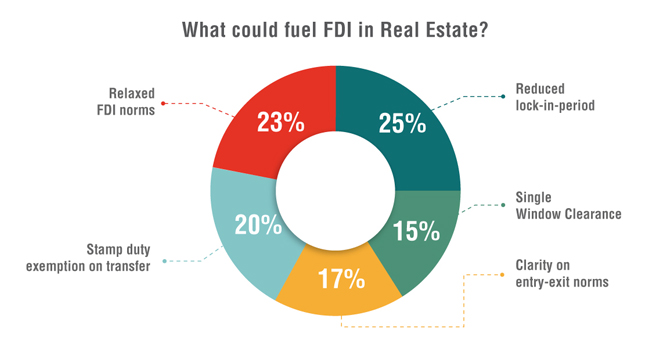Applicability of GST on Real Estate: Under-Construction & Completed Property
GST in India:
The GST journey began in India in the year 2000 when a committee was established to draft law. It took almost 17 years from then to implement GST in the country. The GST bill was passed in the Lok Sabha and Rajya Sabha in the year 2017. On 1st July 2017, the GST law comes into force across the country.
The Goods and Services Tax (GST) Council in the 34th meeting has reduced the GST rate on 19th March 2019 on under-construction houses. For flats rated more than Rs 45 lakh, the new GST rate applicable from April 1, 2019, stands at 5%, against 12% currently.
The GST Council also reduced GST rates on affordable housing to 1%, from the current 8%. In both cases, the builders will not be eligible to claim an input tax credit in the new structure.
This move will give a fillip to apartments under construction in the country, and improve the flow of credit to the real estate sector.
The GST Council practiced a double definition for “Affordable Housing”, based on carpet area and cost. In metro cities, the affordable houses will be defined as a house with a carpet area of up to 60 sq.m. and rated less than Rs 45 lakh. In non-metros, a bigger flat of up to 90 sq.m. would be considered affordable housing, with the price bracket unchanged at Rs 45 lakh.
|
New GST Rate on Under-Construction & Completed Property |
||||
|
Rates from 1st April 2019 |
Rates on or before 31st March 2019 |
|||
|
Residential Property |
Residential Real Estate Project |
Real Estate Project |
||
|
Affordable Residential Flats |
1% |
1% |
8% |
|
|
Others |
5% |
5% |
12% |
|
|
Commercial Property |
Shops, Office, Godown, etc. |
5% |
12% |
12% |
What is Affordable Housing?
Here is the latest classification of affordable housing as per GST Council:
Cost of Property
- up to 45 Lakhs
Carpet Area:
In Metro Cities – 60 Square Meter (645 Sq.Ft)
In Non-Metro Cities – 90 Square Meter (968 Sq.Ft)
If you have already paid 12% on your property, you can not claim it back as the rule is applicable from 1st April 2019.
What are the new GST rates on the construction of residential apartments?
|
Description |
Rate |
|
New affordable housing projects |
1% |
|
Ongoing affordable housing projects opting for new rates |
|
|
Ongoing other than affordable housing projects |
5% |
|
Projects with commercial space <15% of total carpet area |
|
|
New other than affordable housing projects |
What is the rate of GST applicable w.e.f 1st April 2019 on the construction of commercial property such as shops, godowns, offices, etc. in a real estate project?
|
Description |
Rate |
|
Commercial space in Residential Real estate Project where the construction has started on or after 1st April 2019 or; |
5% without ITC on the total consideration |
|
An ongoing project where the promoter has opted for new rates |
|
|
Commercial Space in Real estate Project other than RREP or; |
12% with ITC on the total consideration |
|
An ongoing project where the promoter has opted for old rates |
What are the guidelines for certifying that the construction of a project has begun by 31st March 2019?
If the earthwork for site preparation of the project has been completed and excavation for the foundation has begun on or before 31st March 2019, a construction project shall be considered to have been begun on or before 31st March 2019.
Why did India Adopt the system of Goods & Service Tax (GST)?
The main objective of uniting the GST was to reduce the tax on tax or double taxation, which cascades from the manufacturing level to the consumption level. Apart from that, with the increase of international trade in services, GST has become a global standard.
In simple terms, GST is an indirect tax charged on the supply of goods and services. This rule has replaced many indirect tax laws that earlier existed in India. This tax will be a replacement for all indirect tax levied by state and central government. Exports and direct tax such as income tax, corporate tax, and capital gain tax will not be affected by GST. It would apply to all goods other than crude petroleum, diesel, aviation turbine fuel, motor spirit, and natural gas. The company adds the GST to the price of the product, and a customer who buys the product pays the sales price plus the GST. The GST is paid by consumers, but it is sent to the government by the companies selling the goods and services. As a result, it provides huge revenue for the government.
Applicability of GST
As per the current GST law, construction of a civil structure, complex, building proposed for sale is considered a taxable service and subject for GST. Though, GST is only applicable to the construction service if any part of the payment is received before the issuance of completion certificate. This simply means GST is not applicable if the entire consideration is paid after the issue of the Completion Certificate (CC) by a competent authority.
Therefore, if you buy property direct from a builder and you pay any part of the payment to the builder prior to the occupation, GST would be payable on the amount paid. On the other hand, if a property is bought from the owner in a secondary transaction, then there would be no application of GST as the payment is being done after issuance of completion certificate.
GST on Completed Flats
Cases, where completed flats are bought in a secondary transaction, Goods and Service Tax, would not be applicable to such sale transactions. Therefore, it is important to note that GST is applicable only to payments made to a builder for supplying the construction services. Therefore, where completed flats (ready-to-move) or used flats are bought, the subject of supplying construction service does not happen. So, GST would not be applicable to the purchase of completed flats.
GST on flats bought Under CLSS
The Credit-Linked Subsidy Scheme (CLSS) is introduced to give affordable houses to the poor and the lower sections of the society. To become eligible for the scheme, the maximum annual income of beneficiaries is up to Rs 18 lakh. The rate of GST on houses under the scheme will be 8% and not 12%.
Credit-Linked Subsidy Scheme (CLSS)
The property could be bought under the Credit-Linked Subsidy Scheme (CLSS) at the rate of 8% of GST as follows:-
- Lower Income Group (LIG)
- Economically Weaker Sections (EWS), Middle Income Group 1 or Middle Income Group 2 (MIG-1 & 2) under the Housing for All Mission
- Pradhan Mantri Awas Yojana (PMAY Urban)
What is the rate of GST applicable w.e.f 1st April 2019 on the construction of commercial property such as shops, godowns, offices, etc. in a real estate project?
|
Description |
Rate |
|
Commercial space in Residential Real estate Project where the construction has started on or after 1st April 2019 or; |
5% without ITC on the total consideration |
|
An ongoing project where the promoter has opted for new rates |
|
|
Commercial Space in Real estate Project other than RREP or; |
12% with ITC on the total consideration |
|
An ongoing project where the promoter has opted for old rates |
Property purchased with completion certificate issued and sale amount is completely paid before 1st July 2017
In this situation, since the sale amount is completely paid before the introduction of GST, the benefits do not apply. The buyer will have to pay the Works Contract Tax during property buying.
Property purchased with completion certificate issued and sale amount is partly paid before and after 1st July 2017
Let us take an example to understand this situation more clearly. Suppose, you bought a property in 2012 but it is constructed and completed only in 2018. The value of the stated property worth Rs. 40 Lakhs, out of which the value invoiced before 1st July 2017 is Rs. 30 Lakhs. There is also Rs. 10 Lakhs of invoicing after 1st July 2017. That is, there is invoicing before and after the introduction of GST. How will you handle this purchase as far as taxes are concerned?
Before GST, a Service Tax and VAT was being levied on all properties under construction. Hence, there will be a VAT and Service Tax on Rs. 20 Lakhs invoiced before the introduction of GST. After the introduction of GST, the amount payable will be a flat 12% multiplied by the amount invoiced, i.e. Rs. 10 Lakhs in this case.
Property purchased with completion certificate issued and sale value is completely paid after 1st July 2017
In this situation, since the purchase of property has been completed post the introduction of GST, no tax applies.
Impact of GST Rate on Resale properties
Since resale properties are immovable and do not fall under the definition of Goods under GST, there is no impact. It simply means that there would be no GST on the resale of flats after the introduction of GST.
8% GST Rate on Real Estate under CLSS Scheme
To make the housing sector affordable, the government has introduced several housing schemes for the common public and also providing housing loans at subsidized interest rates. Initially, the government reduced the GST on houses bought with these loans to 12%. The CLSS Scheme finally became 8% after the one-third deduction given to the land.
What are the advantages of GST?
GST has mainly killed the cascading effect on the sale of goods and services. Removal of the cascading has hit the cost of goods. Since the GST regime reduces the tax on tax, the cost of goods decreases. Following are the advantages of GST:
- Higher threshold for registration
- The online simpler procedure under GST
- Defined strategy for e-commerce
- Controlling the unorganized sector
- Increased productivity in logistics
- Lesser compliances
Components of GST:
There are 3-taxes applicable under this system: CGST, SGST, and IGST
CGST:
It is collected by the Central Government on an intra-state sale (Eg: transaction happening within state)
SGST:
It is collected by the State Government on an intra-state sale (Eg: transaction happening within state)
IGST:
It is collected by the Central Government for inter-state sale (Eg: transaction happening between two states)
Is there any GST on the resale property?
There is no GST on the resale of flats after the introduction of GST
What changes has GST brought in?
In the pre-GST regime, every purchaser including the final consumer paid tax on tax. This taxon tax is described as the Cascading Effect of Taxes. After the implementation of the GST, this cascading effect has removed as the tax is calculated on the value-addition at each stage of the change of ownership.
Tax calculations in the earlier regime:
|
Action |
Cost |
10% Tax |
Total |
|
Manufacturer |
2000 |
200 |
2200 |
|
Warehouse adds a label and repacks @200 |
2400 |
240 |
2640 |
|
Retailer advertises@500 |
3140 |
314 |
3454 |
|
Total |
2700 |
754 |
3454 |
Heading towards, the tax burden was passed on at every stage of the transaction and the final liability comes to rest with the customer. This is termed as Cascading Effect of Taxes where a tax is paid on tax and the value of the item remains increasing every time this happens.
Tax Calculations in Current Regime:
|
Action |
Cost |
10% Tax |
Actual Liability |
Total |
|
Manufacturer |
2000 |
200 |
200 |
2200 |
|
Warehouse adds label & repacks @200 |
2200 |
220 |
20 |
2420 |
|
Retailer advertises @500 |
2700 |
270 |
50 |
2970 |
|
Total |
2700 |
270 |
2970 |
In the end, each time an individual is able to claim the input tax credit, the sale price is reduced and the cost price for the buyer is reduced because of the lower tax burden. The final value of the trousers is therefore reduced from Rs. 3,454 to Rs. 2,970, thus reducing the tax burden on the final customer.
What is the GST registration procedure for taxpayers?
Below is the GST Registration procedure for taxpayers:
- Remember your GSTIN and your registered mobile number
- Visit ewaybill.nic.in.
- If you are the first-time taxpayer, you will have to click on ‘E-way bill registration’ to register.
- You will have to enter your GSTIN number and press the “Go” button to submit your request.
- You will be redirected to a new screen where certain details such as the name of the applicant, the business name, the mobile number and the address of the applicant will be auto-generated. You will then have to select “Send OTP” and enter the OTP you receive on your registered mobile number and verify the same.
- Once the OTP is verified, you will have to give your preferred User ID through which you can operate your account.
- You will then have to create a password for your account after which your registration on the GST portal will be complete and you will be able to log in anytime.
How Does Goods & Services Tax (GST) System Work?
Most of the country has a single unified or centralized GST system, which means that a single tax rate is applied throughout the country. A country with a centralized GST platform merges central taxes e.g. sales tax, service tax, and excise duty tax with state-level taxes e.g. entertainment tax, entry tax, transfer tax, and luxury tax and collect them as one single tax. Under the GST regime, the tax is charged at every point of sale. In the case of intra-state sales, Central GST and State GST are charged. Inter-state sales are chargeable to Integrated GST.
Who will pay the GST tax manufacturer or consumer?
Suppose, goods manufactured in Karnataka and are sold to the final consumer in Delhi. Since Goods & Service Tax is levied at the point of consumption. So, the entire tax revenue will go to Delhi and not Karnataka.
What is Anti-Profiteering?
As per section 171 of the CGST Act, if there is a reduction in GST rate on the supply of goods or services then the benefit of Input Tax Credit should be passed on to the buyer by the equal reduction in prices. However, if the seller fails to reduce the prices after the reduction of GST rates, the matter will be mentioned as the Anti-Profiteering Authorities.
History of GST in India:
- In the year 2000, PM Vajpayee established a committee to draft GST law.
- In the year 2004, a task force decides GST must be executed to improve the current tax system.
- In 2006, Finance Minister proposes GST introduction from 1st April 2010.
- In 2007, CST to be phased out and rates were lessened from 4% to 3%
- In 2008, EC finalizes dual GST structure to have a separate tax, legislation
- In 2010, a project to computerize commercial taxes launched but GST implementation postponed
- In 2011, Constituted Amendment Bill to enable GST law introduced
- In 2012, the Standing Committee begins the discussion on GST but stalled it over clauses 279B
- In 2013, the Standing Committee tables its report on GST
- In 2014, GST Bill introduced in parliament by Finance Minister
- In 2015, GST Bill passed in Lok Sabha but unable to pass in Rajya Sabha
- In 2016, GSTN goes live as Amended-Model GST law passed in both houses.
- In 2017, Four supplementary GST Bills passed in Lok Sabha and approved by the cabinet and final GST Bill implemented on 1st July 2017.
GST 2020 updates
- Interest generated from GST late payments will be calculated on net tax liability
- Rs.46,000 crore to be raised by the Centre as interest for GST late payment
- Data analytics is used to fill loopholes in the GST policy
- GST Collection crosses Rs.1.1 lakh crore in the month of January 2020
- States could face a revenue gap of over Rs.1 lakh crore after the withdrawal of GST compensation
- Higher GST rates on fabrics and mobile phones expected to boost revenue collection for the center
- Central GST falls short of the estimate- the CGST collections amounted to Rs.3,38,365 crore
- GST circular on BPO-KPO services withdrawn
- More than Rs.1 lakh crore in GST collected in November 2019
- GST e-invoicing compulsory for businesses with less than Rs.100 crore turnover from 1 April 2020
Data Source: Cleartax and Bankbazar

